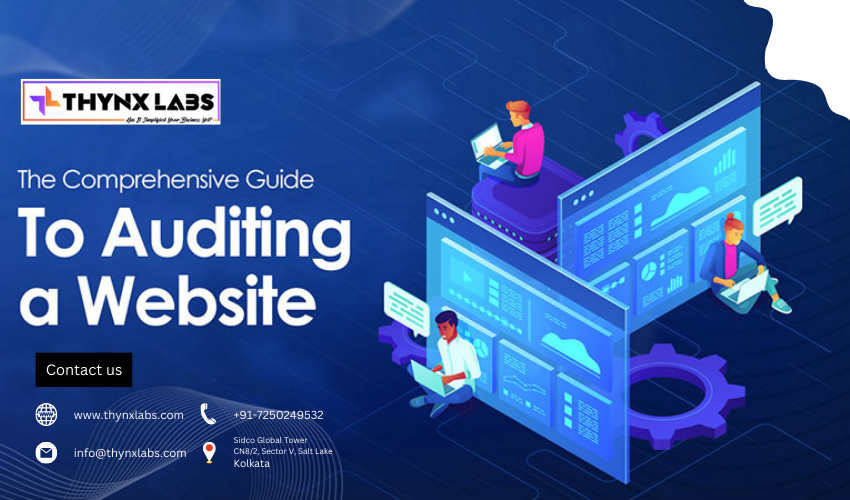Comprehensive Technical SEO Audit Guide
Mastering Ecommerce Success: Comprehensive Technical SEO Audit Guide
In the fast-paced world of ecommerce, technical SEO plays a crucial role in enhancing visibility and driving traffic to your online store. To stay ahead of the competition, conducting a thorough technical SEO audit is essential. This guide will walk you through the essential steps and strategies for a successful ecommerce technical SEO audit, ensuring your website performs optimally and ranks higher in search engine results.
Understanding the Importance of Technical SEO
Technical SEO refers to the process of optimizing your website for crawling and indexing by search engines. It focuses on improving the technical aspects of your site to enhance its visibility and performance. For ecommerce websites, technical SEO is particularly important because it directly impacts user experience, site speed, and overall search engine rankings.
Step-by-Step Technical SEO Audit for Ecommerce
1. Website Crawlability and Indexability
The first step in a technical SEO audit is to ensure that search engines can easily crawl and index your website. Use tools like Google Search Console and Screaming Frog to check for crawl errors and broken links. Make sure your robots.txt file is correctly configured to allow search engine bots to access important pages.
2. Site Speed Optimization
Site speed is a critical ranking factor for search engines and a key component of user experience. Slow-loading pages can lead to higher bounce rates and lower conversions. Utilize tools like Google PageSpeed Insights and GTmetrix to analyze your site’s speed and implement recommended optimizations such as compressing images, minifying CSS and JavaScript, and leveraging browser caching.
3. Mobile-Friendliness
With the increasing use of mobile devices for online shopping, ensuring your ecommerce site is mobile-friendly is imperative. Google’s Mobile-Friendly Test can help you identify any mobile usability issues. Responsive design, fast loading times, and easy navigation are essential for a seamless mobile shopping experience.
4. Secure HTTPS Protocol
Security is a major concern for ecommerce sites, and using HTTPS is a must. HTTPS not only secures data transmission between your website and users but also boosts your SEO rankings. Ensure all pages on your site are served over HTTPS and that there are no mixed content issues.
5. Structured Data Implementation
Structured data helps search engines understand the content on your site better and can enhance your search listings with rich snippets. Implement schema markup for products, reviews, breadcrumbs, and other relevant data to improve your site's visibility in search results.
6. Canonicalization and Duplicate Content
Duplicate content can confuse search engines and dilute your ranking potential. Use canonical tags to indicate the preferred version of a page and consolidate duplicate content. Conduct a thorough audit to identify and resolve any duplicate content issues on your site.
Advanced Technical SEO Strategies
1. XML Sitemap Optimization
An XML sitemap helps search engines discover and index your pages more efficiently. Ensure your sitemap is up-to-date and includes all important pages. Submit your sitemap to Google Search Console and Bing Webmaster Tools for better indexation.
2. Internal Linking Structure
A well-structured internal linking strategy can significantly improve your site's crawlability and user experience. Use descriptive anchor text and link to relevant pages within your site to help users and search engines navigate your content more effectively.
3. Fixing 404 Errors and Redirects
404 errors can harm your site's user experience and SEO performance. Regularly check for broken links and fix them promptly. Implement 301 redirects for any removed or relocated pages to maintain link equity and guide users to the correct content.
4. Optimizing URL Structure
A clean and descriptive URL structure enhances usability and SEO. Ensure your URLs are short, keyword-rich, and free of unnecessary parameters. Use hyphens to separate words and avoid using underscores or special characters.
Continuous Monitoring and Improvement
Technical SEO is an ongoing process that requires continuous monitoring and improvement. Regularly perform technical SEO audits to identify and address any issues that may arise. Stay updated with the latest SEO trends and algorithm updates to ensure your ecommerce site remains competitive.
Conclusion
A comprehensive technical SEO audit is vital for the success of your ecommerce website. By following the steps outlined in this guide, you can improve your site's performance, enhance user experience, and achieve higher rankings in search engine results. Stay proactive in your SEO efforts and continually optimize your site to stay ahead in the ever-evolving ecommerce landscape.


